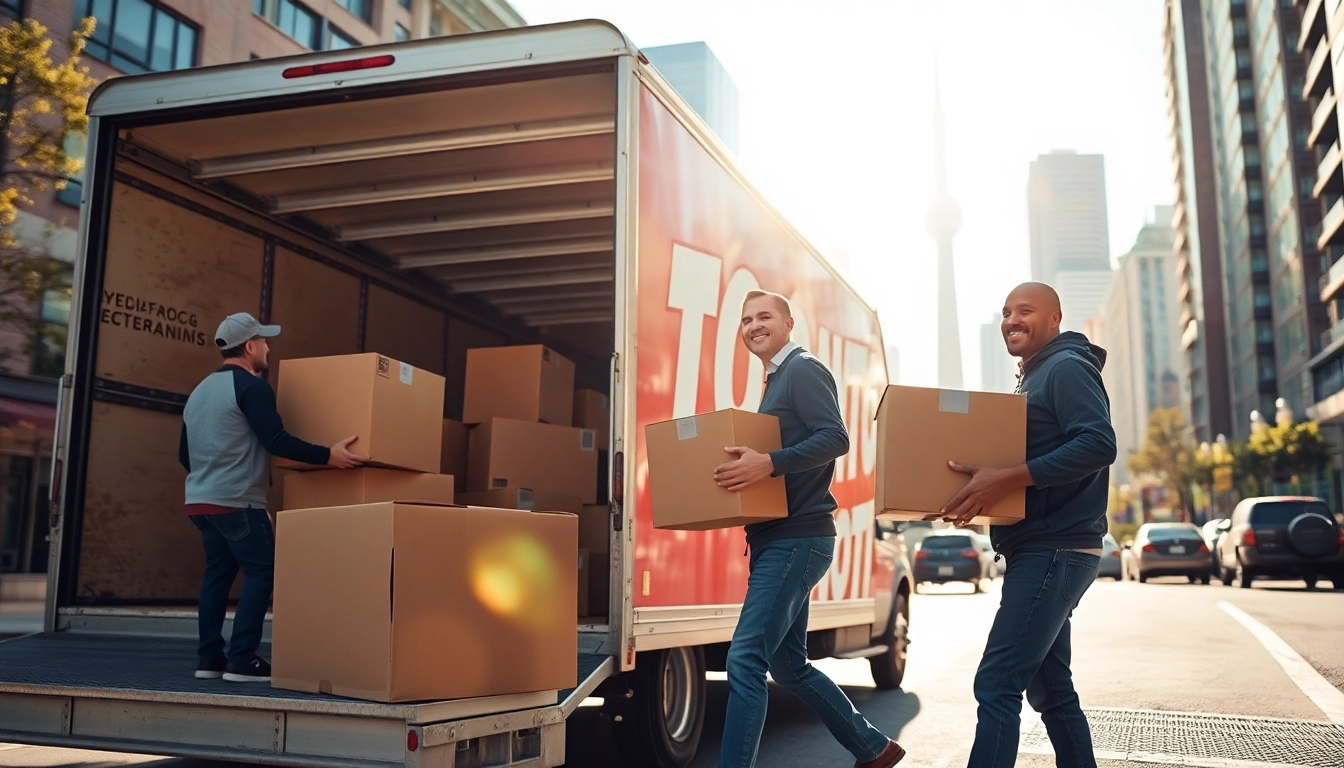Understanding Moving Services
Relocating from one place to another can be an overwhelmingly complex process, often filled with excitement and stress alike. Understanding the range of moving services available is crucial for facilitating a smooth transition. Depending on your unique needs, you may be faced with numerous options that cater to different aspects of the moving process. To help navigate this terrain, it’s essential to break down the types of services available and identify which ones best suit your needs. For detailed insights on moving solutions, visit https://bennettsmoving.com/.
Types of Moving Services Available
Moving services can be classified into several categories, ensuring that no matter your specific requirements, you find the right assistance. Here are the main types of moving services:
- Residential Moving: This service is tailored for families or individuals moving from one home to another. It often includes packing, loading, transport, and unloading of household items.
- Commercial Moving: Businesses relocating to new offices require specialized services to ensure minimal downtime. This includes handling office furniture and IT equipment efficiently.
- Long-Distance Moving: For relocations across state lines, you need a company that understands the logistics specific to long-distance travel, including regulations and protection of your belongings.
- International Moving: Moving overseas entails compliance with customs regulations and the intricacies of international logistics, making specialized knowledge essential.
- Packing Services: Professional packers can efficiently organize and pack your items, saving time and reducing the risk of damage during transit.
- Storage Services: If your new home isn’t yet ready, some moving companies offer storage options to keep your belongings safe until you’re ready to move them in.
Choosing the Right Service for Your Needs
Deciding on the appropriate moving service requires an assessment of your unique situation. Here are important factors to consider:
- Distance: Determine whether your move is local, long-distance, or international. This will greatly shape your decision-making.
- Volume of belongings: The amount of possessions you need to move can influence the choice of service. Larger volumes often require more comprehensive moving solutions.
- Budget: Outline your budget and look for services that offer transparency in pricing without hidden fees.
- Timing: Understand your timeline for moving. Some companies may offer same-day services, while others may have more rigid schedules.
- Special requirements: If you have fragile items, valuable possessions, or specialty equipment, seek out movers who have experience handling such items.
Cost Considerations in Moving
Understanding the costs involved in moving can help you avoid unexpected fees and manage your budget effectively. Key factors affecting moving costs include:
- Distance: Longer distances typically incur higher transportation fees.
- Volume of items: More items require more labor and larger vehicles, driving up costs.
- Packing needs: If you opt for packing services, be prepared for additional charges. This is often worth it for the time saved and assurance of safety.
- Timing: Rates may vary depending on the season. Summer months may be pricier due to higher demand.
- Add-ons: Always inquire about extra services such as storage or specialty item handling, as these can add to the overall cost.
Planning Your Move Effectively
Once you’ve chosen your moving service, effective planning is vital to ensure a successful transition. Here’s how to go about it:
Creating a Comprehensive Moving Checklist
A moving checklist serves as a roadmap to keep you organized and on track. Key items to include are:
- Six to eight weeks before: Begin sorting and decluttering items. Decide what to keep, donate, or discard.
- Four weeks before: Start packing non-essential items and gather necessary moving supplies like boxes, tape, and markers.
- Two weeks before: Finalize all arrangements with your moving company and confirm the moving date.
- One week before: Pack critical documents and essentials for easy access during the move.
- Day before: Ensure everything is packed and ready for the movers.
Timing Your Move: Best Practices
Timing can make a significant difference in your moving experience. Here are some best practices:
- Avoid peak seasons: If possible, plan your move during off-peak periods to potentially save on costs and ensure more availability of services.
- Mid-week versus weekends: Consider moving on weekdays when demand is generally lower.
- Plan for traffic: If you are moving within a city, factor in your timeline to avoid heavy traffic times.
Communicating with Your Moving Company
Effective communication with your moving company is key to minimizing stress. Here’s how to do it:
- Clearly state any special needs: If you have large, awkward, or fragile items, make sure to inform your movers ahead of time.
- Confirm all details: Before moving day, confirm the schedule, the crew assigned, and any fees that may still be a concern.
- Be available on moving day: Stay in touch with the company throughout the process, especially if any unexpected issues arise.
Preparing for Moving Day
The day you’ve been planning is finally here! Proper preparation can lead to a smoother moving experience. Here are actionable steps:
How to Pack Like a Pro
While packing might seem straightforward, taking a professional approach can save you hassle:
- Label boxes: Clearly mark each box with its contents and the room it’s headed to.
- Use the right materials: Invest in appropriate packing materials like bubble wrap, packing peanuts, and sturdy boxes to protect your belongings.
- Pack strategically: Place heavier items at the bottom of boxes with lighter items on top to prevent damage.
- Protect fragile items: Wrap breakables individually and use cushioning to fill gaps within boxes.
Essential Supplies for a Smooth Move
Having the right supplies on hand can ease the moving process. Here’s a checklist of must-have supplies:
- Boxes of various sizes
- Bubble wrap and packing paper
- Tape and tape dispensers
- Markers for labeling
- Plastic wrap for furniture
- Moving blankets or pads
Tips for Everyday Comfort During Moving
Moving can be a physical and emotional strain. Here’s how to maintain comfort throughout the day:
- Stay hydrated: Keep water bottles available for everyone involved in the moving process.
- Snacks and meals: Have easy-to-eat snacks and meals on hand to keep energy levels up during the move.
- Dress appropriately: Wear comfortable clothing and sturdy shoes to handle the physical demands of moving.
Navigating Challenges on Moving Day
Despite thorough planning, unforeseen challenges can arise during your move. Here’s how to prepare and respond effectively:
Common Issues and How to Overcome Them
Being aware of potential issues allows you to have contingency plans:
- Weather conditions: Monitor the weather forecast to prepare for rain, snow, or extreme heat. Ensure you have tarps, umbrellas, or sunblock as needed.
- Last-minute changes: If something goes wrong, remain calm and communicate clearly with your moving company to find a solution.
- Injuries: Be cautious of heavy lifting and ask for help if needed to prevent injuries.
Handling Last-Minute Changes
Flexibility is crucial during a move. Here’s how to handle the unexpected:
- Stay organized: Keep on hand the numbers of your moving company and any alternate contacts.
- Assess and adjust: If something needs immediate attention, assess priorities and make a plan to manage each issue step-by-step.
- Communicate: If your plans change, inform everyone involved to ensure a coordinated response.
Safety Considerations for Your Move
Prioritizing safety during a move can help to prevent accidents:
- Clear pathways: Ensure that pathways are clear of obstacles to help avoid tripping hazards.
- Use proper lifting techniques: Bend at the knees and keep the load close to your body when lifting heavy items.
- Wear protective gear: Consider wearing gloves or a back support brace if moving heavy or awkward items.
Post-Move Follow-Up
After your move, there are essential steps to take to settle in properly:
Settling into Your New Home
Doing so can make you feel more comfortable and at home. Here are some strategies:
- Unpack methodically: Start with essential items and rooms. Focus on one area at a time to avoid feeling overwhelmed.
- Personalize your space: Arrange your furniture and decorations to make the space your own, enhancing comfort.
Unpacking Strategies for Efficiency
To unpack effectively, consider these strategies:
- Unpack by priority: Begin with items you need immediately, such as kitchen supplies and bedding.
- Sort and organize: As you unpack, organize items by category to reduce chaos.
- Recycling and disposal: Have a system for recycling packing materials and disposing of unwanted items.
Providing Feedback to Your Moving Company
Lastly, providing feedback helps both you and the moving company improve. Here’s how to approach it:
- Share your experience: Inform them about what went well and areas that could use improvement.
- Write a review: Your insights can be beneficial for other customers seeking moving assistance.
- Consider a follow-up: If you have any concerns, reach out to discuss them constructively.















Leave a Reply